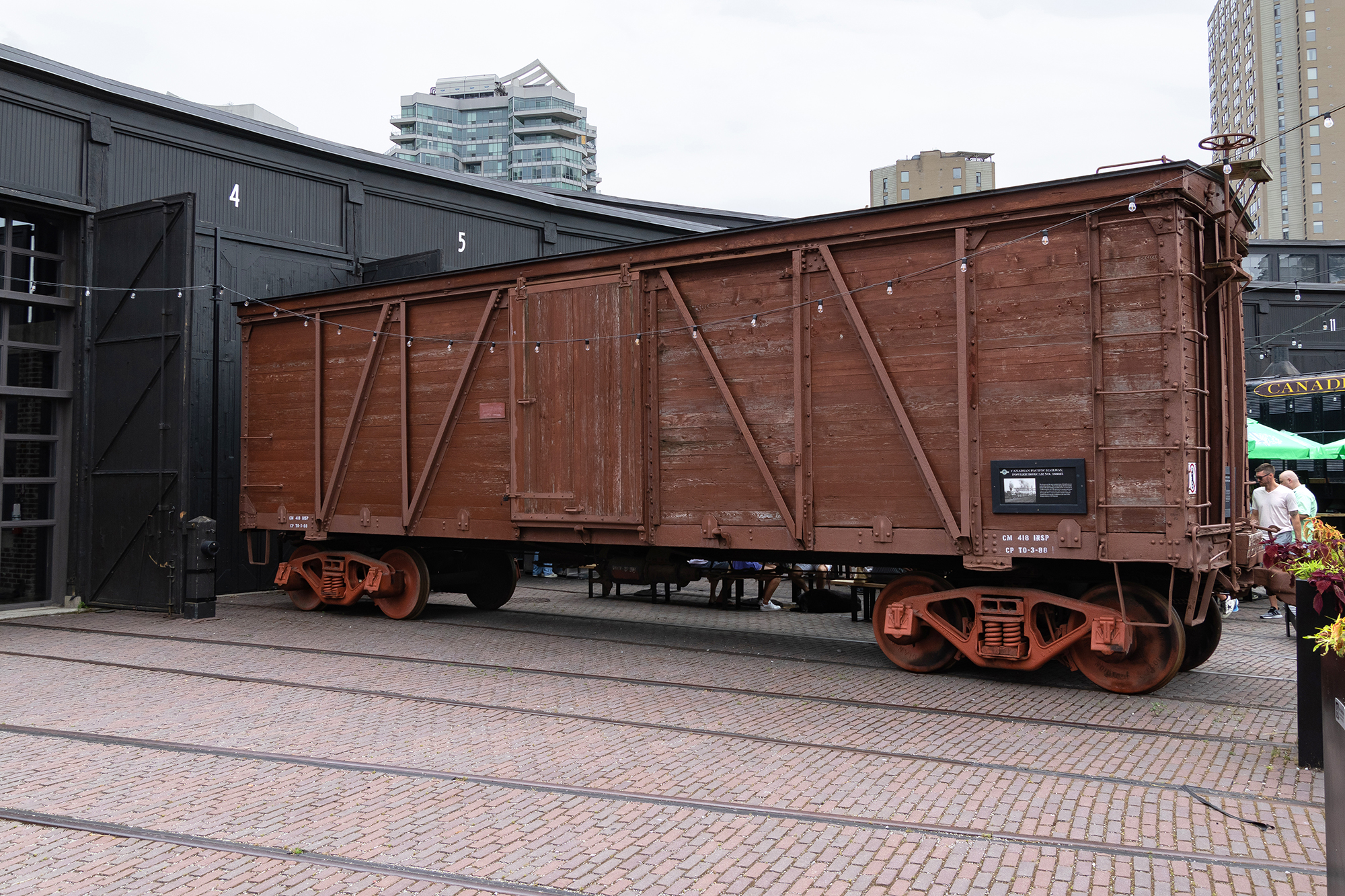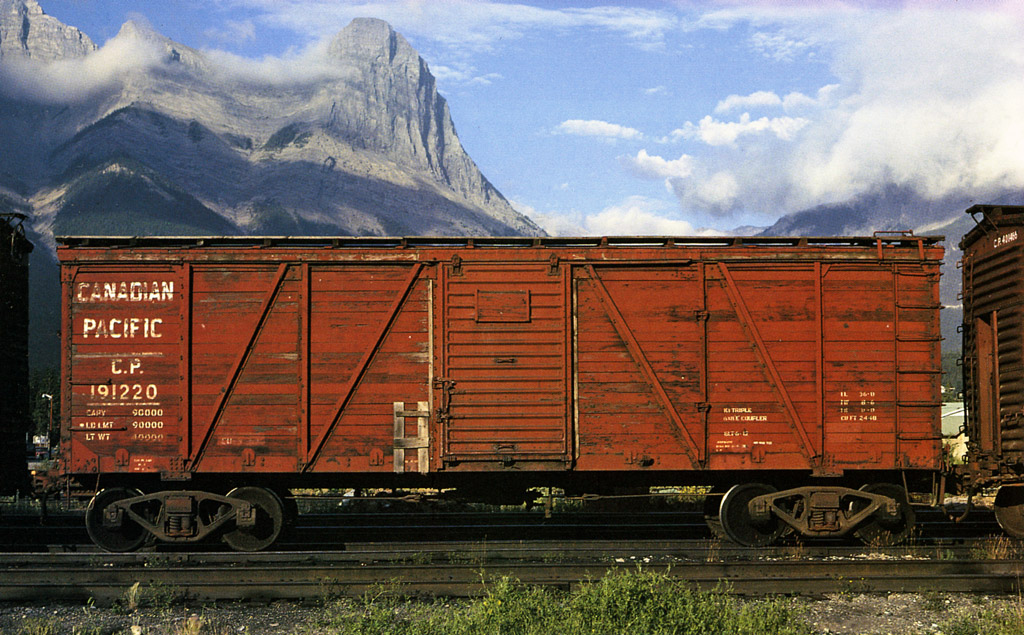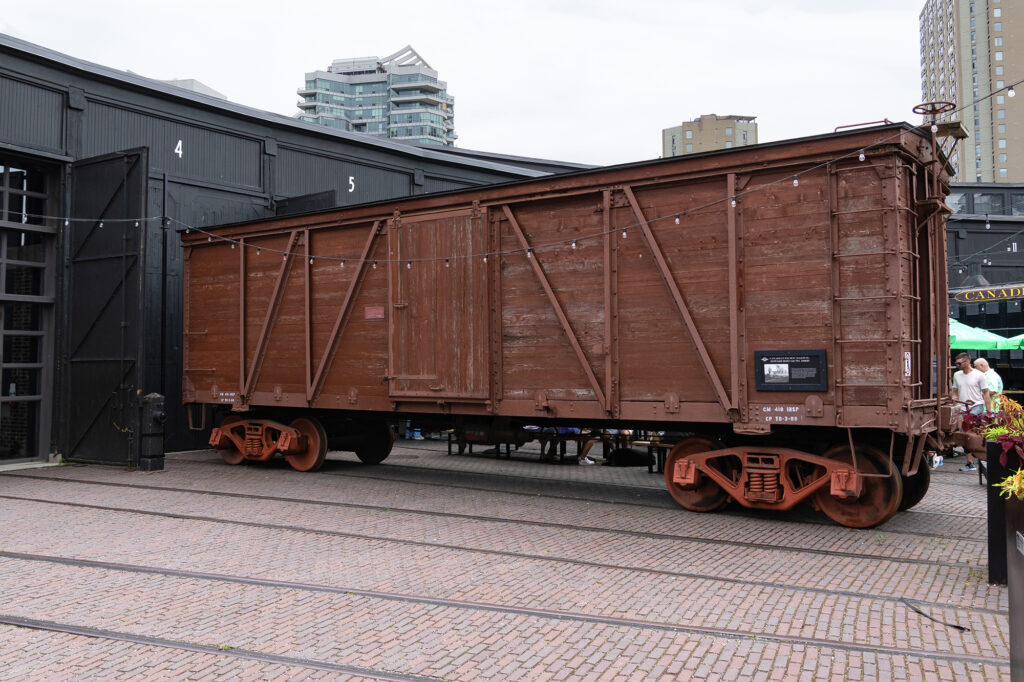The use of steel in the construction of railway cars rapidly gained popularity around the turn of the 20th century as a means to improve durability and crashworthiness. The first freight cars to use steel in their construction were built in 1902, having an inside and outside layer of wood sheathing that surrounded a steel underframe. These cars were built for the Norfolk & Western Railway in the United States, but the concept of having only an inside layer of wood sheathing would be an entirely Canadian innovation. These cars would be cheaper to construct and lighter in weight as a way of affordably handling the increasing amounts of grain produced in Canada’s prairie provinces.
While it’s unknown exactly who came up with the single-sheathed design first, an early form of the Fowler boxcar was designed simultaneously by W. S. Atwood of the Dominion Car & Foundry Company in Montreal and by Canadian Pacific’s chief mechanical engineer W. E. Fowler. Since Dominion Car & Foundry was the only manufacturer capable of building steel rail cars in Canada at the time, Fowler began working with them soon afterward to build prototypes for Canadian Pacific. Three variations of the 36-foot single-sheathed design were built in 1908, and the third one with inside sheathing was selected with a total of 500 ordered by the railway. These would be partially built by the Dominion Car & Foundry but their construction was completed at the Canadian Pacific’s own Angus Shops in Montreal. 1,000 additional cars were ordered in 1909, after which the first began to enter service on Canadian Pacific. To ensure the grain didn’t seep out from inside the boxcar, a bulkhead four to six feet high was inserted to fully enclose the interior space. The grain was poured into the open side door of the car and was usually unloaded with shovels. This was an expensive and laborious process, particularly in Canada where transportation of grains were so significant to the economy. In addition to grain, these boxcars could also be used to carry a variety of dry goods.
Fowler patented a design in July 1908 that was almost identical to the one he produced for Canadian Pacific, from which he departed in 1909 citing health reasons. The Fowler Car Company was formed soon thereafter, and the “Fowler Boxcar” was born. Production of these cars for Canadian railroads increased rapidly with the start of World War One in 1914, and by the following year a total of 75,000 had been produced. Longer 40-foot variants were introduced around the same time, after which competition arrived from other manufacturers. A standard design was also laid out by the United States Railroad Administration, which formed upon America’s entry into the war. The Fowler boxcar in our museum’s collection was built as CP 188625 at the height of the war in 1917.
Despite facing potential replacement by larger 40-foot and 50-foot boxcars in the decades after World War One, the Fowler Boxcar had an incredibly long service life. Even as all-steel boxcars began to take hold in the 1950’s and specialized grain hoppers in the 1960’s, some Fowler boxcars managed to find a place on the rosters of Canadian railroads until 1981. CP 188625 ended up in the possession of the Canadian Railroad Historical Association’s Toronto & York Division, who generously donated it to the Toronto Railway Museum. It was restored by our volunteers in 2015 and subsequently put on display in Roundhouse Park.




